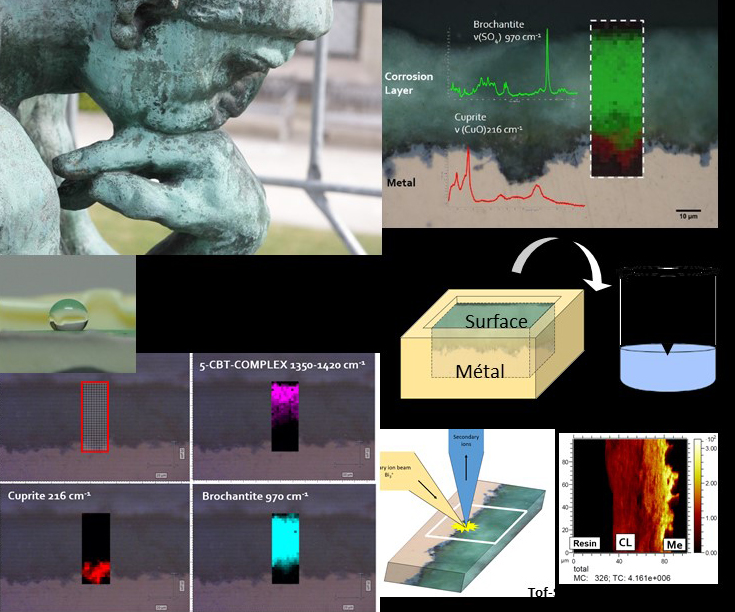Presentation
The LETRIP – France relance project aims to develop innovative protective treatments for copper-base heritage objects that face risk of accelerated degradation in varying environments. This aim is carried out in the context of an academic-private partnership, which enables the exchange of technical expertise between the NIMBE/LAPA laboratory and A-Corros enterprise. A-Corros is a SME specialised in corrosion protection for civil and marine engineering projects, as well as cultural heritage applications. A-Corros and NIMBE/LAPA have been collaborating since 2015 as part of their joint laboratory LABCOM LETRIP (Laboratoire d’Etude des Traitements et Revêtements Innovants pour le Patrimoine), which includes both ferrous and copper-base heritage materials.
The project submitted under the France Relance call complements the LABCOM ANR. Its angle of attack is to adopt a methodological approach adapted to the validation of innovative techniques for the heritage protection on representative sites. This project aims to develop the applicability of treatments based on protocols and materials taken directly from the field of conservation-restoration.
While LABCOM results are an important foundation for the implementation of LETRIP, the methodological approach and experiments carried out are completely innovative and better adapted to the expectations of an academic-private partnership. The strong complementarity between the characterisation methodologies, the experimental and scientific know-how of NIMBE-LAPA and the multi-material field experience of A-Corros are at the heart of the France Relance project, which allows for a rapid iteration of laboratory testing to full-scale implementation.
As part of the project, an objective is to test and validate several corrosion protection processes for copper-base statuary on a representative site, developed in doctoral research projects at NIMBE/LAPA (Silvia Lob (FSP, CYU, 2022) and Erika Ferrari (U Paris Saclay, 2021)). This work demonstrated the effectiveness of using non-toxic corrosion-inhibiting treatments based on carboxylic acid-doped sol-gels on corroded objects, such as sculptures exhibited outdoors. The long-term effects on a representative site will be tested and compared with the processes developed by NIMBE/LAPA and with the more conventional solutions commonly used in the conservation-restoration of large statuary
As a complement to LETRIP, a method of on-site diagnosis of the chemical and mechanical properties of irons, steels and cast irons used in industrial constructions of the 19th century is being developed with A-Corros – for example, railway station halls. In this context, preventive on-site intervention enables us to carry out a corrosion and materials diagnosis aimed at qualifying and characterising the physico-chemical nature and mechanical properties of these structures with a view to their rehabilitation. With a view to conservation and reuse, and therefore to reducing the number of invasive samples taken, site diagnosis protocols need to be improved.
- Partners :
- NIMBE/LAPA
- A-Corros





